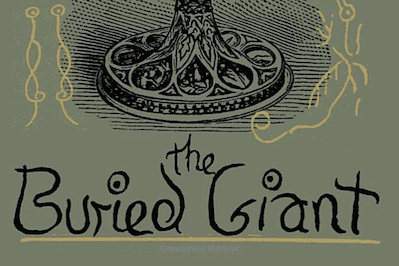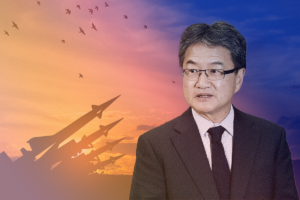The Buried Giant
A new book by Kazuo Ishiguro, whose novels defy classification, is set in a medieval wilderness, complete with dragons and wizards. But as in all his invented worlds, what interests Ishiguro is the abiding human heart. Knopf
Knopf
Knopf
|
To see long excerpts from “The Buried Giant” at Google Books, click here. |
“The Buried Giant” A book by Kazuo Ishiguro
There are authors who write in tidy, classifiable, immediately recognizable genres — Jane Austen, Alexandre Dumas, William Faulkner, Gabriel Garcia Marquez, to name a few — and then there are those who adamantly do not. These others can surprise us with storylines and settings that are guises to be worn and shucked after the telling. Masters of reinvention, they slip from era to era, land to land, changing idioms, adapting styles, heedless of labels. They are creatures of a nonsectarian world, comfortable in many skins, channelers of languages. What interests them above all in their invented universes is the abiding human heart.
Kazuo Ishiguro is such a writer.
He was born in Nagasaki, Japan, was raised in England from the age of 5, and, for all intents and purposes, is English. But his sensibility is neither Japanese nor English; it stands apart from any one culture. Best known for his achingly astute novel “The Remains of the Day,” about a consummate English butler in a fading postwar manse, he is esteemed, as Joyce Carol Oates put it, as “one of our most eloquent poets of loss.”
He has written novels that leap from world to world and defy categorization. There is “Never Let Me Go,” in which the young narrator discovers that her boarding school is a hive of human clones being harvested for their body parts. “When We Were Orphans” tells of a renowned English detective in 1930s Shanghai trying to solve the mystery of his parents’ disappearance. “An Artist of the Floating World,” set in post-World War II Japan, centers on the insuperable generational differences between an older Japanese painter and his grown daughters. If these books have anything in common, it is that an unspoken secret is entombed at each core — an elusive truth that is inferred, but that no one quite understands or can fully articulate.
And so we come to “The Buried Giant,” a spectacular, rousing departure from anything Ishiguro has ever written, and yet a classic Ishiguro story. Set in the misty bogs and moors of England in A.D. 450, not long after the death of King Arthur, the novel is a daring venture into a medieval wilderness of monsters, pixies, dragons, wizards, aging knights and sword-swinging, sanguinary warriors.
“You would have searched a long time for the sort of winding lane or tranquil meadow for which England later became celebrated,” Ishiguro begins, taking on the avuncular tone of a fireside storyteller. “There were instead miles of desolate, uncultivated land; here and there rough-hewn paths over craggy hills or bleak moorland. Most of the roads left by the Romans would by then have become broken or overgrown, often fading into wilderness. Icy fogs hung over rivers and marshes, serving all too well the ogres that were then still native to this land. The people who lived nearby .?.?. might well have feared these creatures, whose panting breaths could be heard long before their deformed figures emerged from the mist. But such monsters were not cause for astonishment.” Monsters were everyday hazards, and every now and then one would stumble into a village in a murderous rage and carry off an innocent child.
It is in just such a bog, in a warren of dwellings carved deep into a hillside, that an elderly couple, Axl and Beatrice, reside. Axl is stooped by age, prone to occasional confusion; Beatrice is frail, tormented by ailments. Although they are vaguely aware that they have a son in some faraway corner of the land, and that they must try to find him, they — like all Britons — are struggling under a dreamy spell of forgetfulness. A she-dragon named Querig has loosed a mist of amnesia over the land, robbing the people of all collective memory.
What prompts Axl and Beatrice to set out in search of their son is that their fellow villagers have strictly forbidden them to own a candle. It has been decided that their old, shaking hands could too easily start a fire. Shunned, marginalized and wondering whether life might not be easier alongside their son, they decide to take off across the bog. But even a crossing of a few days can seem an eternity in that badland. In the course of a desperate odyssey, they will encounter perils they cannot recall: They are guided by a Saxon warrior, who promises to protect them, but whose hatred for their race soon becomes apparent. They undertake the protection of a boy, bitten by ogres and set upon by fellow villagers for the contagion they suspect he carries. They fall into the hands of monks — some inexplicably kind, some evil and treacherous. They travel downriver in bobbing baskets. They climb a mountain with a poison-laden goat. They stumble into Sir Gawain, a knight of King Arthur’s round table, “a whiskery old fool” who claims to be on his way to slay the she-dragon Querig and rid England of her amnesic curse. Pixies spill out of evening mists. Hairless beasts hurl themselves down mossy tunnels.
It would be too easy to call what Ishiguro is undertaking “fantasy” or “magical realism.” Critics will summon such phrases to describe this book, but they would be wrong to do so. Such facile labels — suggesting that the author is relying on literary devices pulled from old bags of tricks — have no meaning here. Instead, what we are given in “The Buried Giant” has the clear ring of legend, as graceful, original and humane as anything Ishiguro has written. By the end of it, we are made to see that a dark grain can enter our collective bloodstream and poison it with a baffling hate. Even the tender love that Axl and Beatrice feel for each other comes under scrutiny as they go. For all the old couple’s efforts to remember, Ishiguro seems to say, some things are best forgotten: Betrayals in a long-suffering marriage can be as devastating as the human impulse to war.
“Are you still there, Axl?” says Beatrice, picking her way along a rough, narrow mountain path.
“Still here, princess,” he answers, trudging behind her.
Forgetting, you see, can bring a higher level of grace.
All the same, I’ll wager you won’t soon forget this book after turning its last pages. The close, in particular, will haunt.
Marie Arana is the former editor in chief of The Washington Post’s Book World. She is the author of the novels “Cellophane” and “Lima Nights” and a biography of Simon Bolivar.
©2015, Washington Post Book World Service/Washington Post Writers Group
Your support matters…Independent journalism is under threat and overshadowed by heavily funded mainstream media.
You can help level the playing field. Become a member.
Your tax-deductible contribution keeps us digging beneath the headlines to give you thought-provoking, investigative reporting and analysis that unearths what's really happening- without compromise.
Give today to support our courageous, independent journalists.









You need to be a supporter to comment.
There are currently no responses to this article.
Be the first to respond.